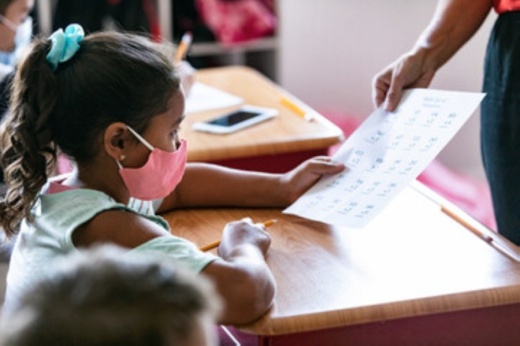According to an Aug. 10 news release, the AAP and CHA have been collaborating on a weekly report that compiles state-by-state data on COVID-19 cases in children since April. The report is updated every Monday and includes data provided by the health departments of 49 states, as well as New York City; Washington, D.C.; Puerto Rico; and Guam.
"In areas with rapid community spread, it's likely that more children will also be infected, and these data show that," AAP President Dr. Sally Goza said in a statement. "As a pediatrician, I urge people to wear cloth face coverings and be diligent in social distancing and hand-washing. It is up to us to make the difference, community by community."
According to the report, 380,174 total COVID-19 cases had been reported in children nationwide as of Aug. 6, which accounts for approximately 9.1% of all confirmed COVID-19 cases in the U.S. While the news release acknowledges that most COVID-19 cases in children are less severe and do not require hospitalization, the release also states the data confirms children are not immune to the virus and can become infected and get sick.
"What we do know from these data is that, in children, deaths continue to remain much lower than in older age groups," said Dr. Sean O'Leary, vice chair of the AAP Committee on Infectious Diseases, in a statement. "But as case counts rise across the board, that is likely to impact more children with severe illness as well. To protect everyone in our communities—children, teens and older adults—we must follow all public health measures that we know can contain the virus. This includes physical distancing, wearing cloth face coverings, washing our hands and avoiding large gatherings."
The release states some of the increase in COVID-19 child cases could be attributed to increased testing capacity. However, the AAP is still calling for a more effective testing strategy so communities can determine appropriate choices about school openings. According to the release, the Centers for Disease Control and Prevention's new reporting requirements, which took effect Aug. 1, are a step in the right direction.
"We are still learning more about this virus," Goza said. "The data raises more questions that researchers would like to explore. For now, we know that there are ways to reduce the spread of the virus. We must work together to keep our families safe."





